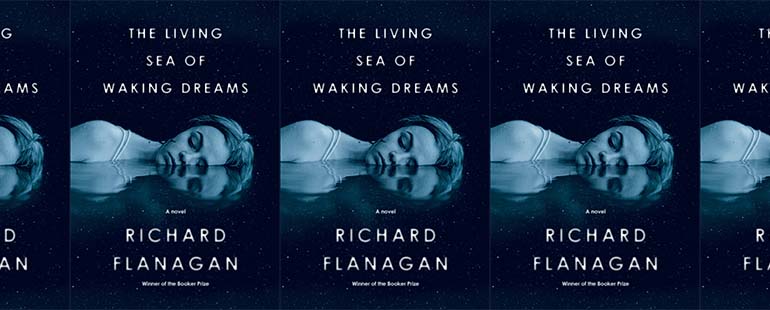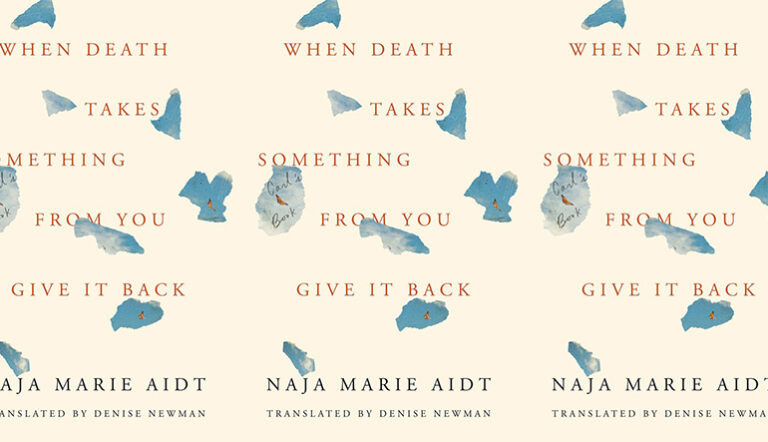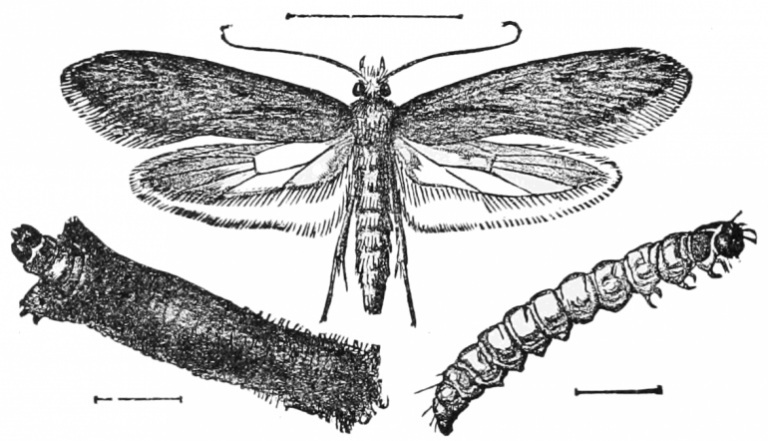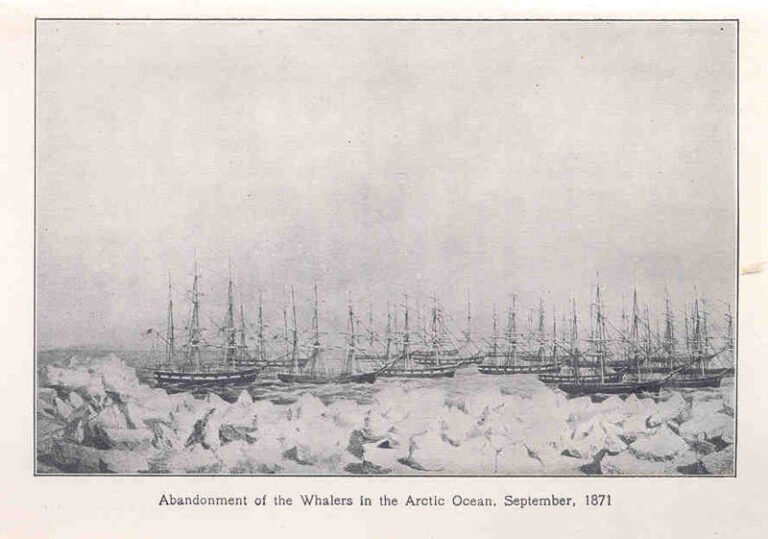The Living Sea of Waking Dreams’s New Ways of Writing the Dying World

“We lack the language, we lack the points of view, the metaphors, the myths and new fables,” Olga Tokarczuk says in her 2019 Nobel Lecture, translated by Jennifer Croft and Antonia Lloyd-Jones. We occupy a “new, drawn-out and disordered rhythm of the world,” submerged in unfathomable and indistinguishable quantities of information online, “chaotic communication,” isolated perspectives, “instability and fluidity,” political and ecological crises, violence, hate speech, and “too many contradictory, mutually exclusive facts, all battling one another.” Any “good news . . . hasn’t the capacity to rein in the painful impression, which I find hard to verbalize, that there is something wrong with the world. Nowadays this feeling, once the sole preserve of neurotic poets, is like an epidemic of lack of definition, a form of anxiety oozing from all directions.” The novel tries to represent this reality, but reality has outpaced the novel: “We lack new ways of telling the story of the world.”
Tokarczuk’s lecture is an appeal for the future, for experiments we have not yet imagined. Amitav Ghosh notes a similar need in The Great Derangement: Climate Change and the Unthinkable (2016): “The climate crisis is also a crisis of culture, and thus of the imagination. . . . We are confronted suddenly with a new task: that of finding other ways in which to imagine the unthinkable beings and events of this era.”
Recently writers have started to offer possibilities. They have responded to our personal-global disruptions by disrupting their forms, fragmenting their narratives, mixing genres, inhabiting the perspectives of animals and objects, collaging information, and stretching and breaking their sentences to hold our century’s quantities of confusion. Their methods differ but all consider the major conflict between the personal—the individual reading the news, trying to make sense of the world, passing through hybrid identities online—and the global—the weight and wrongs of history, disease, institutional deceit, worldwide disparity, and climate catastrophe.
Richard Flanagan’s latest novel, The Living Sea of Waking Dreams (2021), shows us how a writer can tell the story of our anxious, disturbed world in a meaningful way. Flanagan sets illness alongside environmental crisis: Anna, the protagonist, watches as parts of her body inexplicably vanish during the 2019–2020 Australian bushfires. At the same time, she and her brothers, Tommy and Terzo, try to decide how to care for their mother, who lies in a vegetative state with “low grade non-Hodgkin lymphoma.” About one-third of the way into the novel, as the siblings contemplate treatments, Anna distracts herself with the web:
She looked at her phone she checked Instagram she read professors of health were calling for cities to be readied for mass evacuation Indigenous people fearing central Australia is becoming too hot for humans towns running out of water Australia ending its hottest year ever while someone was saying that it wasn’t, that official weather records had been forged to make Australia look colder in the past and hotter now. It wasn’t that these things were fragments, thought Anna. The world was fragments. She liked a meme she reposted she followed she no longer knew if the fires were already over even though they hadn’t really yet begun. Things that happened yesterday were things happening today and things that hadn’t happened tomorrow were old news several months ago. Was it only just yesterday was it the future now?
Here Flanagan models all of the book’s techniques: fragments, a running-on of sentences, compounded news about the climate crisis, confusion of time, and a character using social media to distract herself with news while avoiding the reality of her dying mother before her.
Flanagan presents these disruptions as incohesive: “The world was fragments.” In response, his book is fragments. Each numbered section doesn’t exceed more than a few pages, and the section breaks demarcate changes in point-of-view, emphasizing how the characters bear differing perspectives. The fragmentation gives pace to an unvisualized drama: frequent section breaks, along with run-ons, create the impression of minds frantically thinking against many, too many, concurrent decisions and events.
Flanagan’s narrative voice holds the fragmented perspectives together and drives the drama of their difference, accumulating thoughts, actions, information, and events with conjunctions and gerunds. He establishes this early with the phrases used to start each new section: “And as there was more and more of all these things, says Tommy, there seemed less and less of the world maybe less and less of him”; “perhaps that is why when Francie asked her what had happened to her hand, Anna said nothing”; “but first we need to get some details straight, Terzo was saying”; “and that Wednesday afternoon, not even an hour earlier, it was this same smoke that burnt Anna’s throat and made her cough while she was driving into the Argyle Street car park opposite the Royal Hobart Hospital”; “and in this way, as if everything had returned to normal,” and so on. But, and, perhaps— this is not the Realist novelist’s wind-up toy, but narrative in perpetuity, always in medias res. The right technique for our times, as we live in medias res (do we not?) of a catastrophe that our forebears initiated and that we precipitate with our plastic bottles, our car rides, our eating, our vacations and weekend trips, our charging of laptops and cell phones, our cryptocurrencies and NFTs, our two-day shipping, our corporations, our diets, our hobbies.
As the novel extends, Anna fears losing her body, her mother, and her planet. Flicking through news of the fires polluting her social feeds, Anna feels trapped in powerless disgust, that oozing anxiety Tokarczuk describes in her lecture: “She couldn’t stand Instagram she opened Insta.”
Flanagan suggests the feeling through punctuation and syntax. His sentences, in stream-of-consciousness, overrun one another. About Anna’s vanishing body, obviously representative of our vanishing species and ecosystems, he writes: “It’s impossible to say how the vanishing began or if it was already ended. . . . And not having the right voice tense pronoun makes it so much harder.” Flanagan sheds commas in moments without answers or sense; sentences scroll into each other like images on smartphone screens. Anna “drift[s] into her social media . . . Whitegoods clothes shoes cosmetics conspiracies a farmer tweeting how kangaroos kept lying down in his front garden and dying drought is a bushfire in slow motion, he wrote. Like share update friend subscribe.” This syntax stages how an individual human consciousness struggles to process abundances of information about contemporary apocalypse. There is too much of everything; we are too distracted; our words falter, aggregate, fail.
Novelists and poets have been erasing commas and periods for years, but Flanagan’s erasure represents our unique experience with climate catastrophe and the digital world. Style, focalization, structure, and motif come together to illustrate a Tasmania in flames and its people who do not know what to do about it. The novel’s formal maneuvers do not suggest how someone can work through our grand, interconnected problems of climate change, social media addiction, or a lack of agency, but they demonstrate how individuals internalize the global, and how we might act on the global by looking within.
Flanagan localizes the climate crisis in his characters’ bodies: their disrupted thoughts, their vanishing limbs, and the interminal terminal illnesses that leave them, like the planet, both there and gone. Characters ingest the climate catastrophe through the images on their phones. Flanagan writes of Tommy: “Something was wrong he felt it as a pain as a sickness growing within him.” Later, Anna cares for her mother, whose body seems to hold the seasons and time of a dying planet:
While Anna ran a thumb back and forth over the wrinkles of Francie’s hand, summer turned to autumn, the Tasmanian fires ended, winter came and went, spring arrived, Australia began burning, and on the ever rarer occasions she thought of her missing finger it seemed silly to worry while Francie, relieved from the obligations of conversations she knew were beyond her, conversations perhaps beyond them both, gazed at the ceiling, her laboured breath the only sound, as Anna alternately gently piled and smoothed the soft ridges of her mother’s loose, liver-spotted skin.
In one expansive sentence, Flanagan encompasses a small, intimate scene of relief amidst a single slow human death, as well as the death of the planet. We see wrinkles, liver spots, a thumb—and fires, winter, spring, Australia burning. This is a rare moment of poetry, clarity, and respite. Then things end: the doctor turns off the mother’s machines; Anna metamorphoses into a nesting bird, “green as hope, newly arrived.”
Czesław Milosz’s most famous poem asks, “What is poetry which does not save / Nations or people?” He posed the question in the ruins of Warsaw in 1945. Now, more than seventy-five years later, is it poetry or the novel that will save us from our demise? Or the movie, or the pop song? Can we believe that one book, written in short sections with run-on sentences, will rescue us? Tokarczuk and Ghosh locate the causes of our desiccated imaginations in novels because they write novels, but their theories about stylistic reformation describe all genres, all artworks. If we want to stop watching ourselves destroy the earth, we need action and reformed politics, but also an ability to imagine our relationship to nature differently—through many works, in many mediums.
Last month Netflix released Don’t Look Up, Adam McKay’s satire of how American politics, infotainment, and social media culture have prevented us from seriously discussing and reacting to the climate catastrophe. Many critics disparaged the movie for making its ideas too obvious. I often agree with this kind of critique—an artwork shouldn’t be reducible to an op-ed or tweet. Flanagan’s novel, after all, leads to explicit statements about the climate and loss that drain its emotional effect. But Don’t Look Up is successful because the shrieks of Leonardo DiCaprio and Jennifer Lawrence’s characters are the shrieks of scientists, of our quiet scroll-dulled consciousnesses, and of our future children. It is successful because it finds the right form for our times: in the rapid succession of bright scenes, in the acerbic humor, in the small talk outside the Oval Office before a meeting to report news of the apocalypse, and in the flashes of everyday life, the scenes of dance and hummingbird flight, the beautiful, meaningless dinner conversation as the walls of house, slow and shaking, begin to crash. Don’t Look Up and The Living Sea of Waking Dreams cast the forms of our times. They sound a response to Tokarczuk’s lecture for change. And, in new ways, they remind us of everything that is old: the beauty of the mundane, the tragedy of the collective, and the horror of recognizing that what we have always put aside as different, for later, is right here, now, within ourselves.


